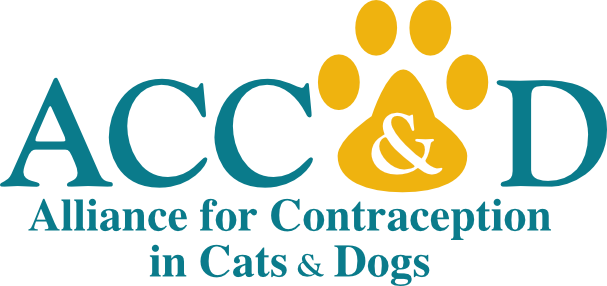ACC&D and Banfield collaborate on new study revealing new data on overweight and obesity risk in dogs
Portland, Oregon (May 20, 2023): Research supporting healthy weight outcomes in dogs just grew with publication of the manuscript “Age at gonadectomy, sex, and breed size affect risk of canine overweight and obese outcomes: A retrospective cohort study using data from United States primary care veterinary clinics” in the Journal of the American Veterinary Medical Association.
The paper is a collaboration between Banfield Pet Hospital, the leading provider of preventive veterinary care in the U.S. with more than 1,000 hospitals nationwide, and a multidisciplinary expert team convened by the Alliance for Contraception in Cats & Dogs (ACC&D).
Authors analyzed anonymized records of over 155,000 dogs seen at Banfield in 2013-2019 to study the relationship between sterilization and overweight or obese (O/O) body condition score (BCS) outcomes. The analysis focused on O/O BCS in relation to dog size, sex, and age at sterilization.
Obesity is a major problem in dogs in the U.S., and it can have serious consequences for dog well-being and health outcomes. “If data can be used to help personalize recommendations on spay/neuter timing for individual patients, as well as institute subsequent measures to prevent weight gain, it will benefit both pets and their people,” Valerie Benka, ACC&D Program Director, shares. “A baseline risk of sterilization surgery on weight gain will also help as non-surgical options come on the market. Surgical sterilization has long been essential for improving animal welfare, but some new technologies could prevent fertility without some of the negative effects of surgery.”
Companion animal obesity has been a popular research topic in recent years, but much data has come from specialty veterinary hospitals or exclusively purebred dogs. The Banfield data set is notable not only for the number of dogs represented, but also the fact that it includes animals from across the U.S. who receive care at primary care practices. Using the same size categories as the groundbreaking Dog Aging Project, the analysis also included both purebred and mixed breed dogs, and in doing so captures a more realistic picture of the U.S. dog population.
Results reinforce some earlier studies while also revealing novel findings. Sterilized dogs overall were nearly twice as likely to develop O/O than intact animals. However, there was a lot of variation; risk was higher in males than females, and in Toy/Small dogs compared to larger breeds. Recognizing the importance of sterilization, the study also focused on sterilized dogs and the age at which the procedure carried the lowest risk of later weight gain. For most sizes, sterilizing at 3 or 6 months was associated with a lower O/O risk than waiting until an older age. However, for Large breeds (including ever-popular Labrador and Golden Retrievers, German Shepherds, and Boxers), sterilizing at 1 year old carried the lowest relative risk; earlier than this was associated with a spike in O/O risk.
“The effect of age on overweight and obese BCS outcomes in Large breeds is perplexing,” explains Dr. Audrey Ruple, Associate Professor of Quantitative Epidemiology at Virginia-Maryland College of Veterinary Medicine, Dog Aging Project researcher, and co-author on the paper. “What effects are at play? Is one breed skewing the results? We’re aiming to provide answers in our next round of analyses.”
“Dogs gain weight for many reasons,” adds Dr. Jan Scarlett, Professor Emerita of Epidemiology at Cornell University’s College of Veterinary Medicine, and paper co-author. “This study doesn’t suggest that people avoid surgical sterilization to prevent obesity. Rather it provides veterinarians and pet owners with useful data that can help inform decision-making, and that’s really a big goal of this project.”
The article is available at no cost here. More project information can be found on ACC&D’s website.
Contributors represent the Alliance for Contraception in Cats & Dogs; Banfield Pet Hospital; Virginia-Maryland College of Veterinary Medicine Department of Population Health Sciences; Washington University School of Medicine Division of Infectious Diseases; Hunter College Program in Animal Behavior and Conservation; Cornell University College of Veterinary Medicine’s Maddie’s® Shelter Medicine Program; and University of Padova Department of Animal Medicine, Production and Health.
ACC&D is a nonprofit organization whose mission is to advance non-surgical sterilants and contraceptives for cats and dogs and to promote their global accessibility. For more information visit www.acc-d.org.
Contact: Valerie Benka, Director of Programs, Alliance for Contraception in Cats & Dogs (ACC&D), valerie@acc-d.org
The study and open-access publication are made possible through a grant from Morris Animal Foundation (Grant ID D22CA-513).
